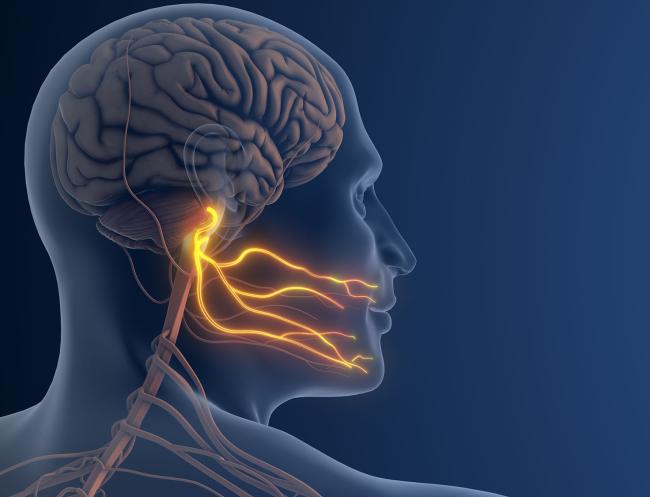Decoding how nerves sense heat and pain
May 6, 2025
Decoding how nerves sense heat and pain
At a Glance
- A study in mice yielded new insights into the workings of nerve cells that sense touch and temperature from the skin, and how inflammation leads to pain.
- The improved understanding of sensory inputs and perception could aid in developing new ways to treat pain.

Sensory neurons are essential to our experiences and perceptions of the world. While researchers have been working for decades to unravel the sense of touch, many questions remain. For instance, scientists don't fully understand how we can so easily distinguish a drop of rain on our cheek from a flitting insect. It also hasn’t been clear how inflammation from injury or disease causes greater touch sensitivity and pain.
An NIH team, led by Drs. Alexander Chesler at NIH’s National Center for Complementary and Integrative Health and Nicholas Ryba at NIH’s National Institute of Dental and Craniofacial Research, has been working to unravel these sensations. Through a series of new studies in mice, they explored how heat and touch sensations are encoded in the nervous system and relayed to the brain.
There are about a dozen different classes of sensory neurons in skin. They're classified based on the specific receptors, channels, and other genes they express. The researchers developed a sophisticated technique to determine how the different types of neuron react to heat and touch. They used this to analyze the responses of thousands of neurons to gentle brushes, pinching, or pulses of heat and test how their activity is transformed during inflammation. Results appeared in Nature on April 23, 2025.
The scientists found that the types of neurons responding to gentle touch don’t detect heat. By contrast, other classes of neurons generally responded to both painful mechanical stimuli and heat. Notably, the work resolved longstanding questions about the role of an ion channel called TRPV1, which is triggered by the compound that makes chili peppers spicy. The analysis showed that TRPV1 plays a key role in detecting warmth.
The team also examined how sensory responses are changed during inflammation of the skin. The data showed that inflammation selectively changed the activity and sensitivity of TRPV1-expressing neurons; they fired in the absence of stimulation and their responses to heat were enhanced.
“This explains how inflammation drives ongoing pain and why heat becomes more painful,” Ryba says. “However, what was unexpected was that touch detection remained unchanged, even though it’s well known that gentle touch becomes painful with inflammation.”
The scientists hypothesized that during inflammation, activity in TRPV1-neurons combined with touch to cause pain. The team then developed a range of genetic mouse models to demonstrate this is indeed the case.
While these findings are in mice, the researchers expect they will apply to people. With further study, the insights may point to new and potentially more specific and safer ways of treating inflammatory pain.
“Our study shows how different types of pain may benefit from different types of treatments,” Chesler explains. “In short, by identifying exactly which cells and molecules ‘turn up the volume’ of different types of pain, we may be able to identify the ‘switches’ that can turn the volume down.”
Related Links
- Creating an Artificial Sense of Touch
- Touch-Sensing Protein Plays Role in Sexual Response
- How the Nervous System Perceives Pleasant Touch
- How Gentle Touch Can Turn Painful after Injury
- Rare Disorder Reveals Insights into Touch and Body Awareness
- Trouble With Touch? Feeling Your World
- Pain
References
A distributed coding logic for thermosensation and inflammatory pain. Ghitani N, von Buchholtz LJ, MacDonald DI, Falgairolle M, Nguyen MQ, Licholai JA, Ryba NJP, Chesler AT. Nature. 2025 Apr 23. doi: 10.1038/s41586-025-08875-6. Epub ahead of print. PMID: 4026916
Funding
NIH’s National Institute of Dental and Craniofacial Research (NIDCR), National Center for Complementary and Integrative Health (NCCIH), and National Institute of Neurological Disorders and Stroke (NINDS); Branco Weiss Fellowship – Society in Science.


